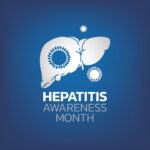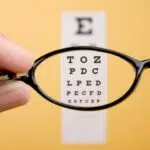Tuberous Sclerosis Awareness Month is observed globally throughout May. This month is set aside to raise awareness about tuberous sclerosis, a rare genetic disorder. The month acknowledges the suffering of people who have this disorder. The month is also an opportunity for organizations and individuals to extend support to people suffering from the disorder. This is done through funding research towards alleviating symptoms and empowering healthcare providers, educators, families of people suffering from the disorder, and other caregivers.
History of Tuberous Sclerosis Awareness Month
Tuberous Sclerosis Awareness Month is set aside to raise awareness and share information about Tuberous Sclerosis Complex, a rare genetic disorder that causes non-cancerous tumors to grow in the brain, kidneys, heart, lives, lungs, eyes, and the skin. With the vital organs being affected, the disorder can cause significant developmental delays, seizures, mental disabilities, and skin abnormalities. Despite these issues, the life expectancy for people with the disorder is the same as for people without.
This disorder is caused by a mutation in two genes that suppress tumor growth in the average human body — TSC1 and TSC2. A mutation in these genes leads to the Tuberous Sclerosis Complex. Apart from the immediate physical development issues, Tuberous Sclerosis Complex results in neurological, developmental, and psychosocial issues in people suffering from the disorder. Since these issues are difficult to diagnose, a majority of patients suffer silently.
An important aspect of the Tuberous Sclerosis Awareness Month is to raise awareness about the common and uncommon issues caused by the disorder among the general public, as well as healthcare workers and caregivers. This ensures that people who are suffering from the disorder get the help they need. More awareness allows for early diagnosis and interventions at the physical and psychological levels. This improves the quality of life of people with tuberous sclerosis. It also leads to more funding for research on the disease and its potential treatments.
Tuberous Sclerosis Awareness Month timeline
The medical community is introduced to the disorder with the description of a distinctive facial rash in 1835 and 1850.
French Neurologist, Désiré-Magloire Bourneville identifies and describes the hard swellings in the brains of his patients as tuberous sclerosis.
A group of international organizations comes together to share information and exchange ideas about T.S.C.
The loci of proteins hamartin and tuberin, which are responsible for suppressing tumor growth, are identified.
Tuberous Sclerosis Awareness Month FAQs
Is tuberous sclerosis life-threatening?
Depending on where the noncancerous growths (benign tumors) develop and their size, they can cause severe or life-threatening complications in people with tuberous sclerosis.
At what age is tuberous sclerosis diagnosed?
Patients are diagnosed with T.S.C. at ages ranging from birth to 73 years.
Is tuberous sclerosis a disability?
The Social Security Administration (S.S.A.) does not have a dedicated disability listing for tuberous sclerosis. However, patients suffering from debilitating symptoms of their tuberous sclerosis may still qualify for benefit payments.
How to Observe Tuberous Sclerosis Awareness Month
Volunteer at a local T.S.C. organization
The global network of organizations that work for tuberous sclerosis has a list of member organizations on their website. Find your local T.S.C. organization and find out if you can volunteer.
Spread information in your community
Print out information about tuberous sclerosis and distribute it among organizations in your community. You can also work with your community leaders to organize a talk about the disorder in local schools and colleges.
Run a fundraiser
Treatment for the disorder is constantly being researched. Support the researchers by organizing a fundraiser to support their efforts!
5 Facts About Tuberous Sclerosis That Will Blow Your Mind
One million people suffer from the disorder
While Tuberous Sclerosis Complex is a rare disease, there are a lot of people who are suffering from the disease worldwide.
There is no cure
Like many genetic disorders, the disorder has no cure — treatment involves managing symptoms.
The diagnosis needs clinical and genetic tests
Since the symptoms are primarily through rashes and tumors, several clinical tests are first conducted to eliminate other, more common causes.
Early diagnosis helps with developmental issues
Seizure control through drugs and surgeries has proven successful in helping young children develop at a normal rate without delays caused by tumors.
Psychiatric disorders
About 90% of people suffering from T.S.C. end up being diagnosed with autism, A.D.H.D., anxiety, depressive disorder, or any combination of these.
Why Tuberous Sclerosis Awareness Month is Important
We feel for people with T.S.C.
The difficulties of the disorder sound isolating. We feel for the people suffering from T.S.C. and we want to show our support.
We want to support the research
Research into the disorder results in new and improved treatments for T.S.C. We want to help ensure that the people with the disorder receive the best care.
We want to support the caregivers
Healthcare workers and families of people with T.S.C. have a difficult road ahead of them. Since caregiving is such a hard task, we want to show our support for all the caregivers of people with T.S.C.
Tuberous Sclerosis Awareness Month dates
| Year | Date | Day |
|---|---|---|
| 2026 | May 1 | Friday |
| 2027 | May 1 | Saturday |
| 2028 | May 1 | Monday |
| 2029 | May 1 | Tuesday |
| 2030 | May 1 | Wednesday |











































































































































































